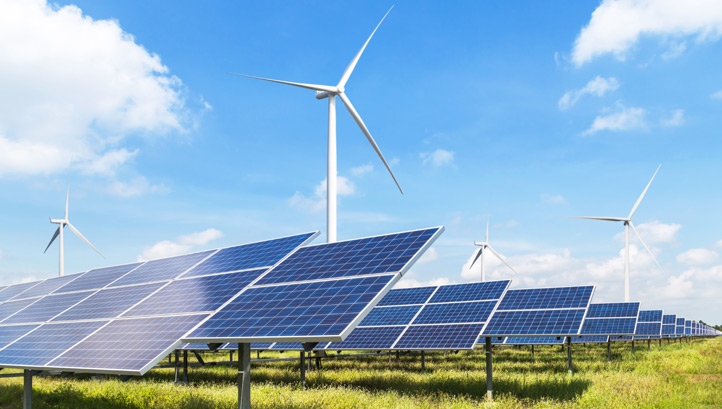
How did sub-Saharan Africa’s most developed economy end up with systematic load-shedding?
Lagos — South Africans first experienced loadshedding in the later months of 2007 and have been dealing with rolling blackouts since. Load shedding refers to the deliberate and controlled rolling out of blackouts implemented by the country’s electricity utility, Eskom, to avoid a complete power grid collapse.
So how did one of Africa’s most developed nations end up in this dilemma? For starters, South Africa experienced a growth in electricity demand in response to growing industrialisation, population growth and urbanisation. Eskom faced significant financial challenges, primarily stemming from mismanagement, corruption, and cost overruns on major projects. These financial woes limited the utility’s ability to invest in new capacity and upgrade existing facilities. The utility additionally failed to diversify its generation portfolio, mainly in response to international pressures, but this was slow and faced resistance from vested interests. This resulted in the utility remaining heavily reliant on its rapidly ageing and increasingly poorly maintained coal-powered fleet. On top of this, Eskom’s ability to generate power consistently was affected by disruptions in coal supply due to strikes, transportation problems, or contractual issues.
All these factors resulted in the rapid degradation of the coal stations and the systematic decrease of the unit’s capabilities to produce sufficient capacity, as displayed by the energy availability factor (EAF). This measure indicates the percentage of maximum energy generation that a plant can supply to the electrical grid, limited only by planned and unplanned outages. Eskom aims to adhere to its generation sustainability strategy that has been implemented and requires, on average, that Eskom’s power station fleet should have an energy availability factor of 80%, leaving 10% for planned maintenance outages and 10% for unplanned outages (9% UCLF and 1% OCLF).

However, since 2000 the utility has recorded a systematically decreasing trend in its EAF. This degradation was initially less pronounced, with a CAGR of -0.8% between 2000 and 2012. However, from 2012 onwards, the coal fleet’s poor management and rapid degradation became increasingly apparent, with EAF values plummeting well below the recommended 80:10:10 ratio.
There was a marked increase in unplanned breakdowns, or unplanned capacity load factor (UCLF), which measures the lost energy due to unplanned production interruptions resulting from equipment failures and other plant conditions. South Africans thought load-shedding was a thing of the past from 2016 to 2017, as Eskom managed to increase the EAF close to the recommended 80%, but this proved to be a pre-emptive notion as the country was plunged back into progressively worsening load-shedding from 2019 onward. There are speculations that the available coal power units were operated well above their designed recommendations, resulting in the rapidly deteriorating state of the coal units and the associated increase in unplanned breakdowns.

Is the rapidly ageing coal fleet the reason we are experiencing loadshedding? Well, yes and no.
For many years, Eskom has told South Africans that the ageing power plants are the main reason we are experiencing loadshedding. While this has the smallest grain of truth in it, according to the data, there appears to be no direct correlation between the age of the power plant and its operational performance (EAF). Mismanagement, corruption, poor maintenance, and sabotage cause most breakdowns, not the age of the power fleet. Coal power plants in other parts of the world, such as the US, Europe and Asia that were built around the same time as the South African plants all show average EAFs of 85% – 90%, with some even showing improvements in performance as the plants were maintained and upgraded with the latest technologies.

Newer power plants, such as the Tier 1 Medupi and Kusile Power Plants, which are eight and six years old, would be expected to outperform their significantly older counterparts. However, both plants have been plagued with high degrees of unit outages, a similar issue seen in significantly older power plants. Kusile and Medupi, in relative terms, are some of Eskom’s worst-performing stations, with older plants such as Matimba, Lethabo and Matla, on average over the past seven years outperforming them by a factor of up to six times. So while Eskom’s coal fleet is ageing rapidly, the poor performance is not a direct cause of their age, but rather the poor maintenance, mismanagement and sabotage.
Is there a quick fix to South Africa’s loadshedding woes? The short answer is no…
The long-term impacts of the mismanagement, poor maintenance, sabotage and general corruption at Eskom will take years to fix. Apart from the operational issues at the various power plants, the utility is massively in-debt and continuous restructuring of the leadership at the helm of Eskom is not helping the process. The country’s only nuclear power plant Koeberg has been taken offline for refurbishment and extension of operation but has been plagued with delays and other operational hurdles.
Opinions are being voiced that Eskom should invest less in additional renewable capacity (which requires a large-scale investment into the grid) and more into fixing and extending the lifetime of the existing coal fleet, with Eskom unable to fund both simultaneously. While this makes sense for a short-term fix, the country needs to look at the issue long-term. South Africa increasingly relies on investment from the developed world, pushing the green energy transition agenda (and rightfully so), necessitating the country to adjust its long-term objectives. The existing coal fleet’s average age is 40+ years, and the associated costs to install emission-capturing technology to adhere to globally agreed standards are far beyond Eskom’s current financial capabilities. The age of coal-powered generation is ending, and while complete reliance on only a select few technologies is undoubtedly not advisable (see Europe’s natural gas dilemma in early 2022), green technology is the future.
While fixing the supply side will take time, there has been significant activity in managing the demand side this year. Many South African households and businesses are moving to solar rooftop installations to offset their demand from the grid. Eskom has recently released statistics indicating that the country’s installed solar rooftop PV capacity has increased from 983 MW in March 2023 to 4,412 MW in June 2023, representing a growth rate of 349%. This has been fundamental in ensuring the country is not plunged into a nationwide blackout. It has allowed the public utility to lower loadshedding stages and provided it with crucial time to conduct maintenance on its ailing coal-power fleet and restore its pumped hydro and diesel storage. The increase in solar rooftop installation is expected to grow substantially over the next five years as municipalities will begin implementing feed-in tariffs (Cape Town has already started) for all small-scale embedded generation systems (SSEG), further alleviating loadshedding. Increases in feed-ins will necessitate economies of scale as the hours of loadshedding, monthly access fees, and once-off feed-in meter costs are still too high for the average consumer to justify or enable the ability to feed electricity to the grid.
While there are no short-term fixes to South Africa’s loadshedding woes, encouraging signs point towards a brighter future. The nation’s ability to confront and address the issues that led to this dilemma has spurred a shift towards positive change, with more investments into renewable energy technologies being attracted to the country as reforms are being implemented. The dramatic increase in solar rooftop installations has emerged as a game-changer, empowering households and businesses to contribute to the energy supply and alleviate pressure on the grid. This transition to renewable energy reduces reliance on traditional coal-powered generation, enhances energy security, and paves the way for a more sustainable future. As South Africa embraces green technology and fosters a culture of energy conservation, it stands poised to overcome the loadshedding challenges that have plagued it for years. The journey ahead might be demanding, but the nation’s determination to transform its energy landscape offers a beacon of hope for a resilient and vibrant future; it is evident that the momentum is building.



